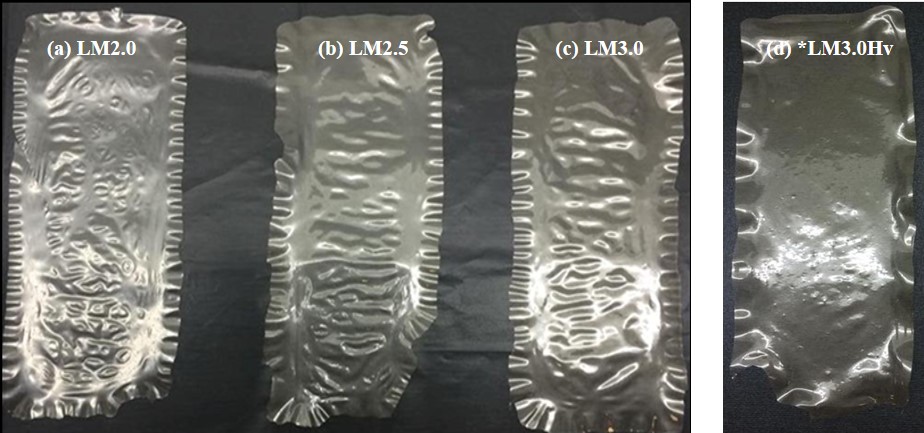 |
|
Increased interest in providing safe food with excellent quality and shelf-life has resulted in increased efforts toward developing new bio-based packaging materials. The objectives of this study were to develop and characterize films based on linseed mucilage (LM) at concentrations of 2.0%, 2.5%, and 3.0% and the further development of antimicrobial films (AFs) incorporating Hamamelis virginiana (Hv) extract. The films with the greatest LM concentration was selected as the best formulation based on its mechanical properties, water vapor permeability and moisture sensitivity. Moreover, the antimicrobial activities of Hv extract against foodborne pathogens were evaluated. Minimum inhibitory concentrations were 1.18 mg mL-1 for L. monocytogenes and 2.37 mg mL-1 for S. typhi, S. aureus, and E. coli. Finally, AFs were developed by incorporating Hv extract at 2.37 mg mL-1 into a base of 3.0% LM, increasing elongation at break, antioxidant activity to 80.56%, moisture sensitivity, and antimicrobial activity (increasing inhibition zones to 19.50 – 22.50 mm). It also decreased tensile strength, maximum force, and water vapor permeability. These results suggest that AFs based on LM with Hv extract have sufficient properties for a potential packaging material.
Keywords: mucilage, Hamamelis virginiana, antimicrobial activity, antimicrobial films, physico-mechanical properties.
|
|
 |

